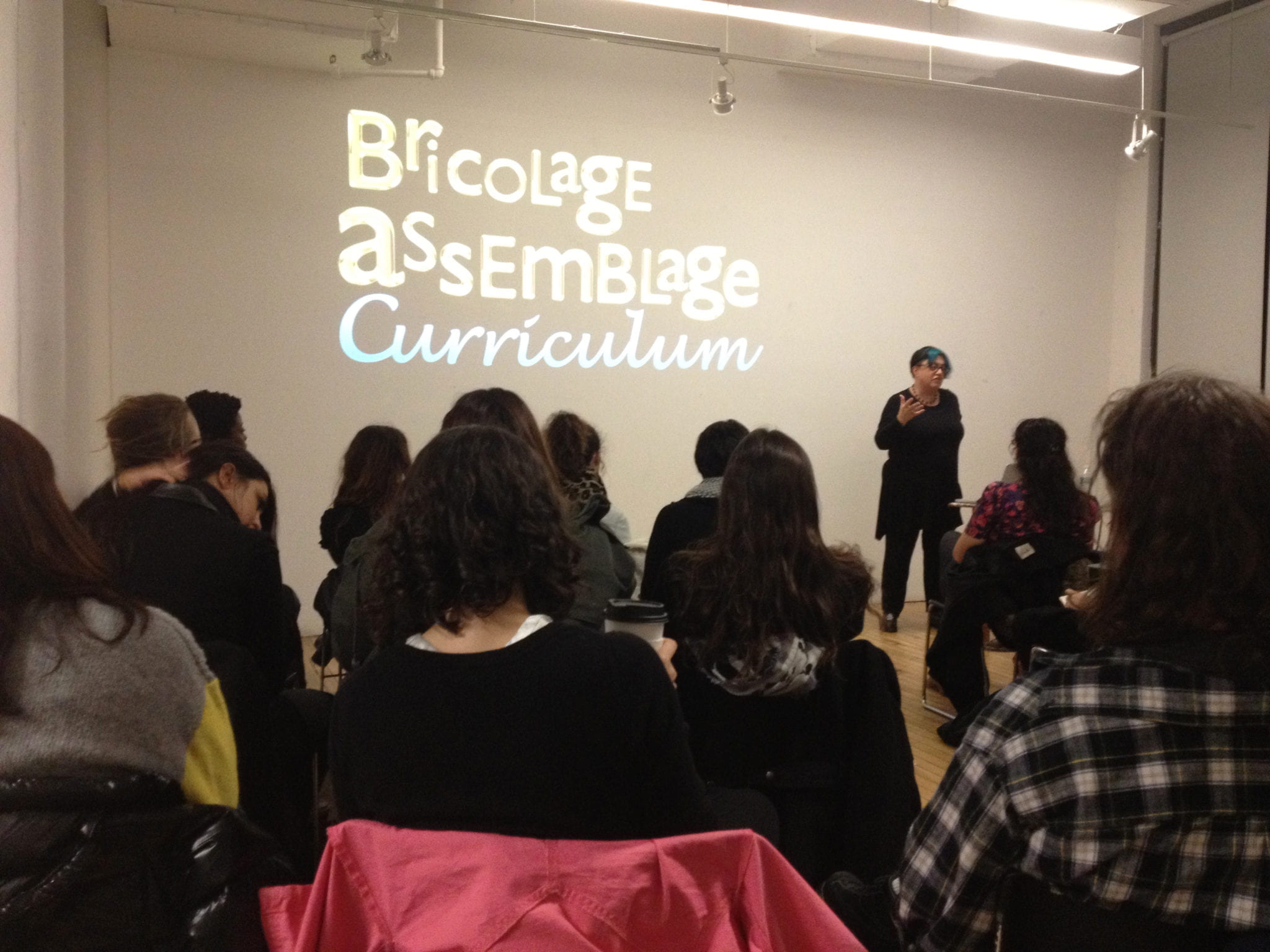In the Fall 2013 semester, the Art + Education Programs at NYU hosted a talk with artist and educator Olivia Gude, on developing a teaching practice and curriculum focused on post-modern and community engagement.


In the Fall 2013 semester, the Art + Education Programs at NYU hosted a talk with artist and educator Olivia Gude, on developing a teaching practice and curriculum focused on post-modern and community engagement.


This visual, practice-based research project, a collaboration between Dipti Desai, the Director of Art + Education, and Munira Bootwala, a Graduate student in the program, centers around these questions: ‘What does it means to be a refugee in one’s own country and how do people renegotiate their identities as citizens of a country when their rights are stripped? What roles do material and symbolic culture (artifacts and photographs that invoke memories of life before displacements) play in recreating a sense of home and recovering a loss of identity?’ This research, conducted in Gujarat in 2007, combines oral histories and photographs to create a narrative of memory that gives voice to the Muslims who became internal refugees in 2002, during the worst Hindu-Muslim riots in India.


Immediately following September 11, 2001, a series of discussions and ‘teach-ins’ were organized by an ad hoc group of NYU faculty, staff, and students. Each gathering addressed issues that were for the most part not dealt with by the media at the time, such as Islam and fundamentalism, labor, the meaning of an attack on the World Trade Center, war as a response, and media censorship. Dipti Desai, a professor in the Art Department, and Thi Bui, a graduate student in Art Education, became involved early on in the teach-ins. After three faculty-led teach-ins, the group decided to make the next one more student-centered, with a variety of forums for students to participate in the discussion and feel comfortable voicing their concerns, feelings, and experiences. We felt this was a perfect opportunity to engage students and the public through the visual arts in a dialogue about the role of art in a democratic society. Lisa DiFilippo, another graduate student in Art Education, joined us in planning this event. An on-site all day activist art project was agreed upon along with an hour-long workshop discussing the notion of activist art, its history, and the strategies activist artists employ.

